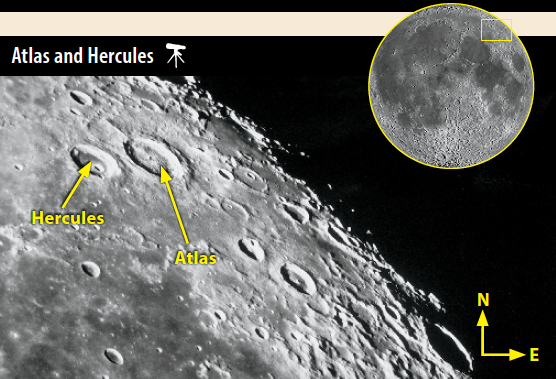Wednesday, October 20
Full Moon occurs at 10:57 A.M. EDT. October’s Full Moon is often called the Hunter’s Moon. And it’s the perfect time to return to the crater Aristoteles in the lunar north, which we visited last week.
Observing the Full Moon with a telescope can be a bit eye-watering, but pop in a filter or bump up your magnification to cut down on the amount of light traveling through your scope and into your eye. Do note that even then, your night vision will suffer, so if you plan to do any other observing, you might want to get it in before you swing your gaze to the Moon.
Once you’ve got Aristoteles and its neighbor Exodus in your sights, compare them to the image above, taken at a different Sun angle, to see how a few days can completely change the look of the lunar surface. Now, the Sun is high overhead, and Aristoteles looks like an oval of light-colored material near circular Exodus. Any small secondary craters visible around Aristoteles last week are now gone, washed out of view until the Sun starts to set from the opposite direction.
Sunrise: 7:16 A.M.
Sunset: 6:13 P.M.
Moonrise: 6:31 P.M.
Moonset: 7:08 A.M.
Moon Phase: Full










